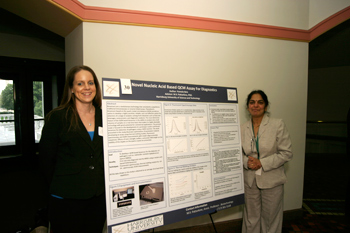 Methicillin-resistant Staphylococcus aureus is more than a mouthful. It’s a kind of bacteria that can infect the skin, blood, lungs and urinary tract. The type of bacteria, also known as MRSA, is often contracted in hospitals and nursing homes and is resistant to common antibiotics.
Methicillin-resistant Staphylococcus aureus is more than a mouthful. It’s a kind of bacteria that can infect the skin, blood, lungs and urinary tract. The type of bacteria, also known as MRSA, is often contracted in hospitals and nursing homes and is resistant to common antibiotics.
A 2006 study by the Pennsylvania Health Care Cost Containment Council said patients with MRSA stayed in the hospital two and one-half times as long as patients without the infection, and were four times as likely to die. The average cost of a hospital stay was nearly $88,000 for patients with MRSA, compared to an average of around $29,000 for patients without it.
Dr. Leena Pattarkine, who teaches biotechnology at the Harrisburg University of Science and Technology, has been working for three years on an easier way to detect MRSA. With financial assistance from the state and the university, Pattarkine has developed a new technique to test for MRSA infections, using a device that can measure samples down to the picogram. This can get results in a matter of minutes. That would be a major improvement over the way MRSA is detected now, by taking a sample to a lab and waiting about six hours for the results.
“If you can detect it early enough, you can treat it early,” she says.
Pattarkine says the technology could potentially be developed into a handheld device comparable to the blood glucose meters diabetics use. For now the project remains in the lab, but Pattarkine is looking for investors to bring it to market.
“I really hope that somebody comes forward and invests in this project,” says senior Pamela Ibric, the third student to work with Pattarkine on her research.
Sources: Pamela Ibric and Dr. Leena Pattarkine, Harrisburg University of Science and Technology
Writer: Rebecca VanderMeulen